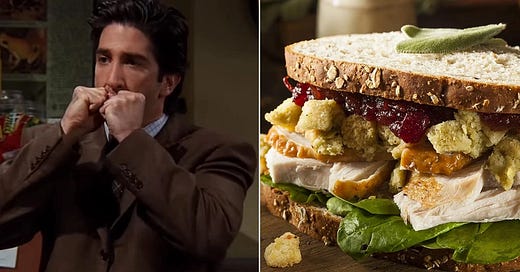When it comes to brand communications, most people focus on obvious channels like social media, websites, and email marketing. Yet, the most critical touchpoint—direct customer interaction—is often overlooked. Whether this interaction is in person, online, or through after-sales support, it’s where customers decide if a brand’s promises hold true. For service-based industries like hospitality, food and beverage, or beauty, this direct contact is paramount as poor communication in these moments can cost you your business.
Which is where sandwich fillings come in. Last week, I visited a newly opened sandwich shop with positive reviews.Targeted at the breakfast and lunch crowd, it boasted a menu catering to traditional tastes with a good selection of fillings. I opted for a ham and cheese on granary, asking for a smidge of cranberry sauce as an alternative to pickle.
What happened next was disappointing. Two enormous slices of bread were laid out, each smothered in an excessive amount of cranberry sauce (no butter). A mountain of thinly sliced ham was piled on, topped by a concentrated handful of pre-grated cheese. The ham was quite wet in consistency and because there was so much of it, it kept falling out of the bread. The cheese, because it was pre-grated, was dry and had been concentrated only into a small diameter in the middle of the sandwich, so it also kept falling out of the bread. Obviously, sandwich fillings are somewhat subjective, but for a 40% premium over the typical £2.75 packaged sandwich, I’m expecting cave-aged freshly grated cheddar and dry cured Bavarian ham with a zesty cranberry relish, not a thoughtless assembly of supermarket ingredients that prioritises quantity over quality.
This isn’t just about a bad sandwich. It’s a failure to consider the customer experience. If your hero product is sandwiches, and they’re assembled without care for flavour balance or practicality, what message does that send? That you don’t care about your customers? That quality doesn’t matter? At its core, this is a brand communication problem. The sandwich shop’s physical product didn’t align with the impression its positive reviews and premium pricing had set.
Now, contrast this with another experience I had later that week. I visited a service-led business—not even one that offers food or drink—and while I waited, they offered me a complimentary hot drink. They asked how I liked it, if I’d like water on the side, and when it arrived, it came with a festive touch: a small mince pie. This thoughtful gesture, simple yet personal, made me feel valued and ensured I’ll be a repeat customer.
The lesson here is clear. You can invest heavily in creative campaigns, stylish branding, or innovative marketing, but if you fail to meet basic customer expectations, you’ll undo all your hard work (think about how many people I’ve already told this story to). Every interaction with a customer is a moment of truth. Are you meeting their needs or merely projecting what you assume they want? Are you exceeding expectations or barely meeting them?
The old adage rings true; if it’s form over function or style over substance, customers will quickly see through it. Brand communication isn’t just about what you say, it’s about what you do and every interaction, from a sandwich to a service, tells your customer what your brand stands for. The businesses that truly listen to their customers and strive to exceed expectations will always have the edge. Needless to say, I won't be going back. May your leftover Christmas turkey sandwiches be balanced and flavourful.
In the meantime, tell your friends!





